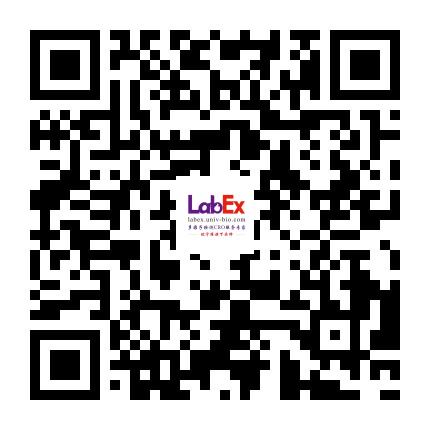Tumor cell-derived exosomes home to their cells of origin and can be used as Trojan horses to deliver cancer drugs
cancer therapy; doxorubicin; exosome; homing; integrin.- Theranostics
- 12.4
- 2020 Feb 10;10(8):3474-3487.
- Human
- 抗体芯片
- 药物研发
- 药物研发
- 肿瘤细胞
- ADAM15,Integrin alpha 6/CD49f,betaIG-H3,Integrin alpha 9,BMPR-IB/ALK-6,Integrin alpha V/CD51,Cadherin-4/R-Cadherin,Jagged 1/CD339,Cadherin-11,JAM-B/VE-JAM/JAM2/CD322,Cadherin-13,JAM-C/JAM3,E-Cadherin,LRP-6,N-Cadherin,MCAM/CD146,P-Cadherin,MEPE,VE-Cadherin,MUCDHL,Cathepsin D,Nectin-2/CD112,CD40,Nectin-4,CEACAM-5/CD66e,Neurotrimin,CHL-1/L1CAM-2,Notch-1,Clusterin,NrCAM,Coagulation Factor II/Thrombin,Periostin/OSF-2,COMP/Thrombospondin-5,Podocalyxin,CRELD2,E-Selectin,Desmoglein 2,Semaphorin 3A,ECM-1,SREC-I/SR-F1,EGF R/ErbB1/HER1,SREC-II,Endoglycan,Stanniocalcin 1,EpCAM/TROP-1,Syndecan-1/CD138,ErbB2/HER2,Syndecan-4,ErbB3/HER3,Thrombospondin-2,ErbB4/HER4,TIMP-4,ESAM,TROP-2,Galectin-2,VAP-1/AOC3,HPRG,VCAM-1,Integrin alpha 3/CD49c,VEGF R1/Flt-1,Integrin alpha 5/CD49e,VEGF R2/KDR/Flk-1,ACE,HB-EGF,ADAM8,ICAM-2/CD102,ADAM9,IL-1 RII,ADAM10,IL-15 R alpha,ALCAM/CD166,Integrin beta 1/CD29,Amphiregulin,Integrin beta 2/CD18,APP (pan),Integrin beta 3/CD61,BACE-1,Integrin beta 4/CD104,BCAM/CD239,Integrin beta 5,C1q R1/CD93,Integrin beta 6,CD9,JAM-A/CD321,CD23/Fc epsilon RII,Lipocalin-2/NGAL,CD31/PECAM-1,LOX-1/SR-E1/CLEC8A,CD36/SR-B3,MD-1/LY86,CD40 Ligand,MMP-2 (total),CD44H,NCAM-1/CD56,CD58/LFA-3,NCAM-L1/CD171,CD90/Thy1,Osteopontin,CD99,PAR1,CD155/PVR,Pref-1/DLK-1/FA1,CEACAM-1/CD66a,RECK,CX3CL1/Fractalkine,Stabilin-1,CXCL8/IL-8,TACE/ADAM17,EMMPRIN/CD147,Thrombospondin-1,Endoglin/CD105,TIMP-1,Epiregulin,TIMP-2,Galectin-1,TIMP-3,Galectin-3,TNF RII,Galectin-3BP/MAC-2BP
相关货号
LXAH119-1
Abstract
Cancer is the second leading cause of death worldwide and patients are in urgent need of therapies that can effectively target cancer with minimal off-target side effects. Exosomes are extracellular nano-shuttles that facilitate intercellular communication between cells and organs. It has been established that tumor-derived exosomes contain a similar protein and lipid composition to that of the cells that secrete them, indicating that exosomes might be uniquely employed as carriers for anti-cancer therapeutics. Methods: We isolated exosomes from two cancer cell lines, then co-cultured each type of cancer cells with these two kinds of exosomes and quantified exosome. HT1080 or Hela exosomes were systemically injected to Nude mice bearing a subcutaneous HT1080 tumor to investigate their cancer-homing behavior. Moreover, cancer cell-derived exosomes were engineered to carry Doxil (a common chemotherapy drug), known as D-exo, were used to detect their target and therapeutic efficacy as anti-cancer drugs. Exosome proteome array analysis were used to reveal the mechanism underly this phenomenon. Results: Exosomes derived from cancer cells fuse preferentially with their parent cancer cells, in vitro. Systemically injected tumor-derived exosomes home to their original tumor tissues. Moreover, compared to Doxil alone, the drug-loaded exosomes showed enhanced therapeutic retention in tumor tissues and eradicated them more effectively in nude mice. Exosome proteome array analysis revealed distinct integrin expression patterns, which might shed light on the underlying mechanisms that explain the exosomal cancer-homing behavior. Conclusion: Here we demonstrate that the exosomes' ability to target the parent cancer is a phenomenon that opens up new ways to devise targeted therapies to deliver anti-tumor drugs.Keywords:cancer therapy; doxorubicin; exosome; homing; integrin.
金课堂之文献解析 文献原文请点击
本网站销售的所有产品及服务均不得用于人类或动物之临床诊断或治疗,仅可用于工业或者科研等非医疗目的。







 沪公网安备31011502400759号
沪公网安备31011502400759号
 营业执照(三证合一)
营业执照(三证合一)


